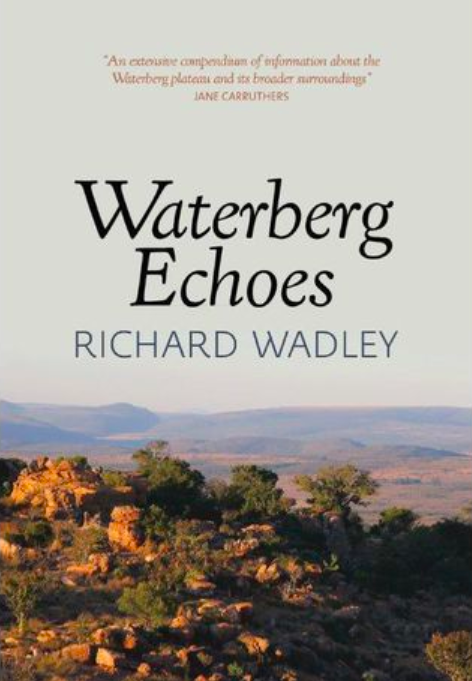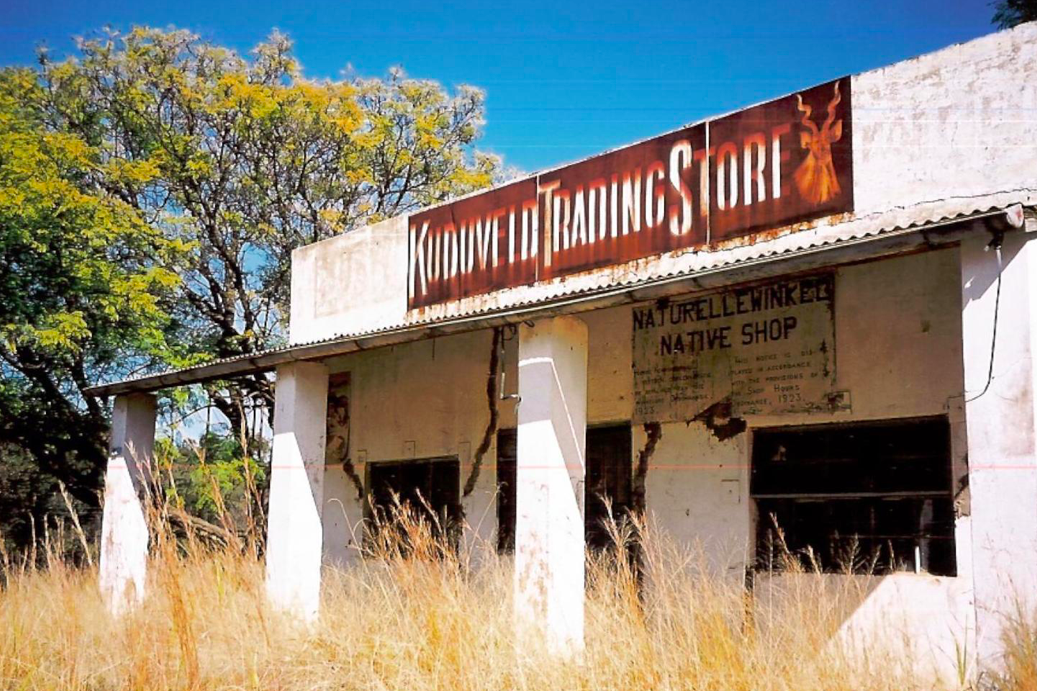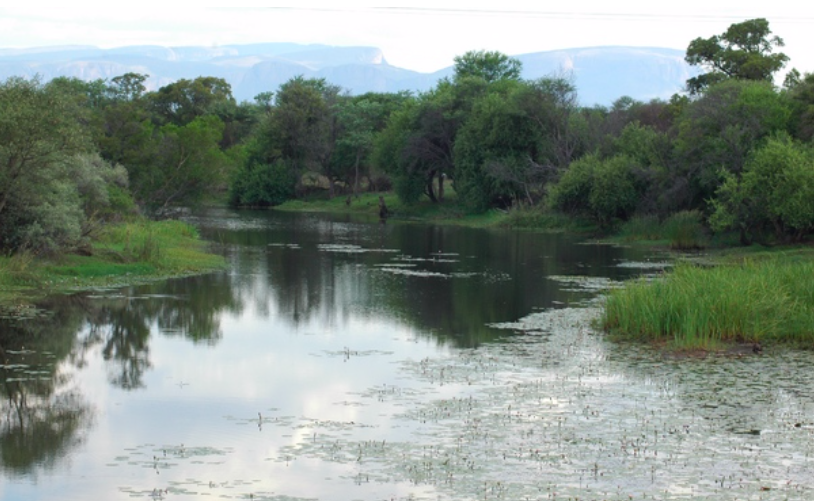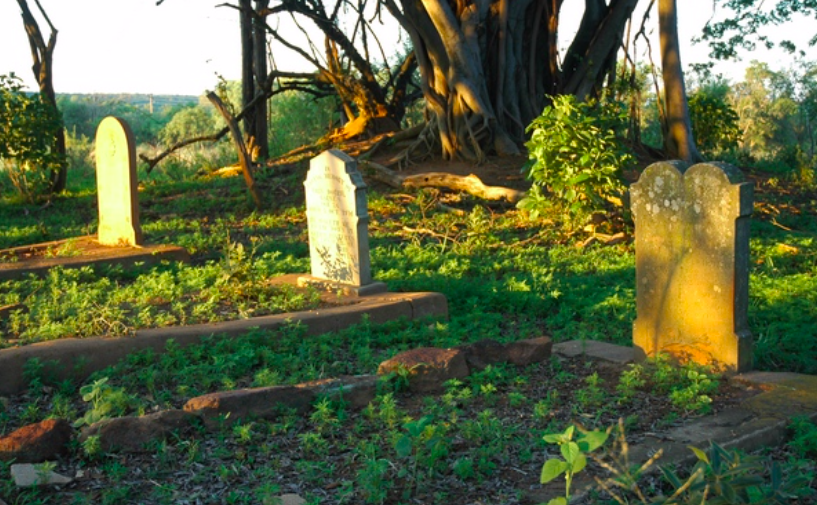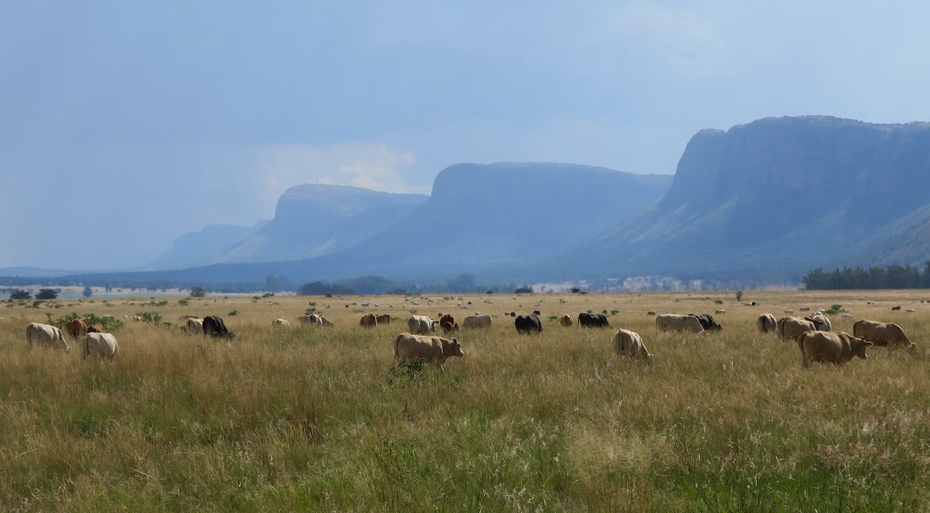
Richard Wadley is a retired geologist who lives in the Waterberg. Over the last two decades he has gathered a vast archive of historical information on the Waterberg. It is a great compendium of knowledge with layer upon layer of research and knowledge organized around the many stories of the people past and present. He documents the history of the Waterberg in the Limpopo Province of South Africa. This is a study of depth, extraordinary detail and great richness. Waterberg Echoes covers everything from pre-history, archaeology, geology, history and on to the present.
Book Cover
The Waterberg is a district extending over 45 000 square km in the Limpopo Province; it is the largest district in the province. Sam van Coller who writes a lovely foreword to the book describes the Waterberg as a cake that rises abruptly out of extensive plains extending in the direction of every compass point. The goal must be to reach the Waterberg plateau accessed through one of the many beautiful passes – the Sandrivierspoort, Bakker’s Pass, Bokpoort, the Kloof Pass among other routes. The Waterberg plateau is surrounded by the towns of Bela-Bela (Warmbaths), Modimolle (Nylstroom), Mookgophong (Naboomspruit) and Mokopane (Potgietersrus) to the East and Thabazimbi and Lephalale (Ellisras) to the West and North. The only town genuinely within the Waterberg is Vaalwater, described as a disorderly village. The name changes of the last twenty years reflect the coming of democracy, political rights for all and new arrangements in local government.
The Waterberg starts at Bela-Bela (old Warmbaths) as you head north up the N1. Most Joburg people have had a taste of the warm resort waters for a weekend break. Our family are thermal bath enthusiasts so we have explored one or two other hot water baths and resorts in the area. Perhaps you have been on a family scout camp to Lapalala or you are an avid fan of the writer Eugene Marais and gone in search of his haunts. I have news for you - we have all just scratched the surface until you encounter Richard Wadley. It is his first published book but it is a tour de force. This is the ultimate book to take as your guide if you are interested in exploring the Waterberg. My discovery of this book places the Waterberg top of my bucket list for an exploring holiday.
Understanding the topography and location of the Waterberg has to be the starting point. We are immediately oriented with the end paper large map and beyond that scattered through the text are fifty illustrative maps. It’s the combination of all the stories bursting to be told, the many wonderful coloured photographs and the superb maps that makes this book.
Lyn Wadley, a distinguished archaeologist, has contributed a fine chapter on the archaeology and pre-history; she writes based on first hand experience of the middle and late stone age, the rock art of the Waterberg. She brings to life the herders, farmers and settlers where scholars piece together the tools implements and artifacts of ancient times.
Wadley succinctly tackles the subject of the relatively recent carving of a homeland – Lebowa, created by the apartheid government in the 1960s, a so called state until it was dissolved in 1994. There is an earlier history to black settlement.
It is an area of great natural beauty and extraordinary biodiversity. There is evidence of early human settlement that dates back to the Middle Stone Age and rock art survives from the Later Stone Age. There are suppositions that Khoekhoe herders travelled through the Waterberg and plenty of evidence found by archaeologists that there were farmers in the iron age. Poor soil and unreliable water made for tensions between various early settlers.
The Kuduveld trading store, formerly Barnes se Winkel – now demolished (Richard Wadley)
This is an enormous work. It is a book that can only be described as encyclopedic. It is a compendium of knowledge and carefully garnered research. The text runs to over seven hundred pages but then there are more than 200 pages of end notes, a comprehensive bibliography and a professional index. The author’s love of the Waterberg shines through. It’s a brick of a book but what a stunning treat and the perfect book for a lockdown stay at home month. The author and the publisher are to be congratulated on a landmark publication. I think this is a book that will define the Waterberg for decades to come.
It is packed dense with information and an extraordinarily detailed compilation of the stories of the people, the geography, the archaeology the economy and the history of the area.
The Matlabas River near Matlabas with the Waterberg escarpment behind (Richard Wadley)
Settlers’ Graves – the Barnes Family on the Weltevreden Farm. The graves lie beneath the shade of a huge fig tree - George Barnes died in 1932 and was the owner of Barnes store (Richard Wadley)
Kathy Munro is an Honorary Associate Professor in the School of Architecture and Planning at the University of the Witwatersrand. She enjoyed a long career as an academic and in management at Wits University. She trained as an economic historian. She is an enthusiastic book person and has built her own somewhat eclectic book collection over 40 years. Her interests cover Africana, Johannesburg history, history, art history, travel, business and banking histories. She researches and writes on historical architecture and heritage matters. She is a member of the Board of the Johannesburg Heritage Foundation and is a docent at the Wits Arts Museum. She is currently working on a couple of projects on Johannesburg architects and is researching South African architects, war cemeteries and memorials. Kathy is a member of the online book community the Library thing and recommends this cataloging website and worldwide network as a book lover's haven.

